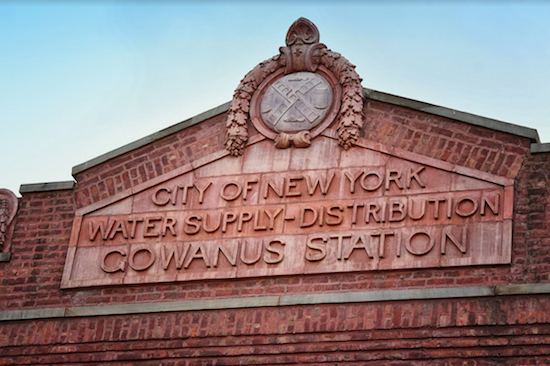Old vs. New: As Superfund cleanup proceeds, problems emerge in Gowanus
As residents rally for historic building, is the area losing its charm through Canal cleanup?

On Tuesday, roughly three dozen constituents gathered outside the Gowanus Station, a historic two-story building built in the early 20th century, to try and save the structure from demolition. The structure may need to be torn down as part of the Gowanus Canal’s Superfund cleanup to make room for a combined sewage overflow tank. Eagle photos by Andy Katz
Few residents will argue that the Superfund cleanup of the Gowanus Canal is a botched project. The 1.8-mile polluted waterway is certainly in need of some help. That much is clear.
Just look at the coal tar glistening in the afternoon sunlight. Or take in that pungent odor emitting from its surface on a warm summer day. Or perhaps, recall when “Sludgie the Whale” and a dolphin perished in the waterway. (Though their cause of death was never determined, the inhospitable conditions of Brooklyn’s notorious canal certainly could not have helped.)
